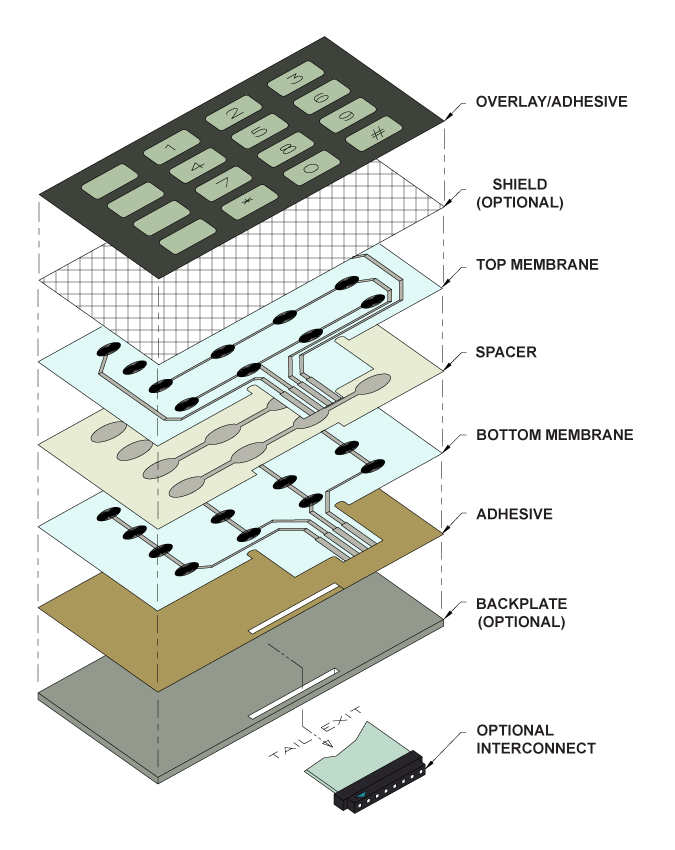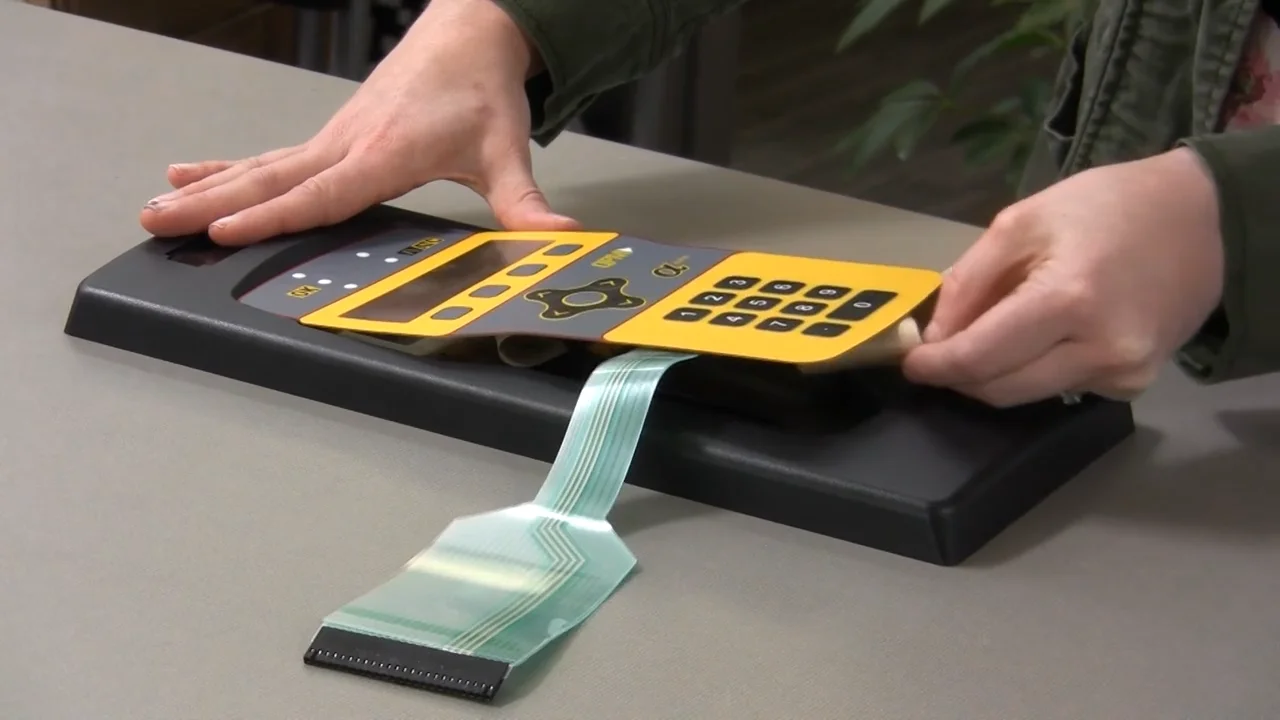Why Selecting the Right Membrane Switch Is Vital for Your Product Layout
Why Selecting the Right Membrane Switch Is Vital for Your Product Layout
Blog Article
Understanding the Performance of Membrane Layer Changes for User User Interface Devices
The performance of membrane layer switches stands for a substantial improvement in individual interface layout, incorporating effectiveness with aesthetic convenience. These buttons operate via a multi-layered structure that equates individual communications into electric signals, permitting both compact formats and resilience versus environmental variables. As markets increasingly focus on user experience, recognizing the nuances of membrane layer switch modern technology becomes crucial. What ramifications do these advancements hold for future applications, and just how might they redefine customer interactions throughout various gadgets?
What Are Membrane Layer Switches?
Membrane switches are cutting-edge interface devices that help with user interaction with electronic devices. These flexible elements contain numerous layers, including a graphic overlay, spacer, and a published circuit layer. The design enables a seamless combination into different electronic devices, improving both the aesthetic and practical elements of interface.
Membrane switches are typically utilized in a vast array of applications, from home home appliances to commercial machinery and medical gadgets. Their building typically includes a slim account, making them a suitable option for small styles. The tactile feedback given by these buttons can be crafted to meet particular customer choices, making sure efficient communication between the individual and the device.
Sturdiness is another considerable advantage of membrane layer switches, as they are immune to dirt, moisture, and chemicals, which boosts their life expectancy in demanding environments. In addition, these switches can be customized in regards to form, size, and visuals style, permitting branding and user-specific attributes. Generally, membrane switches over represent a practical remedy for improving customer experience in digital devices, combining functionality with aesthetic allure in an effective manner.
How Membrane Layer Changes Job
Operating on a simple concept, membrane layer switches use a split building to register customer input efficiently. Each switch includes several layers, consisting of a printed circuit layer, a spacer layer, and a leading graphic layer, which are created to interact seamlessly. When an individual presses the leading layer, it compresses the spacer layer, bringing the conductive components of the circuit layer into contact with each various other.
This contact develops a shut circuit, signaling the device to execute a certain function. The design permits for various setups, consisting of responsive feedback, which can enhance the user experience by giving a physical sensation upon activation. The materials utilized in membrane switches often include versatile substratums, such as polyester or polycarbonate, which ensure sturdiness and resilience against deterioration.

Trick Advantages of Membrane Buttons

One more significant advantage is their density. Membrane switches are thin and light-weight, which allows manufacturers to conserve area in their devices without giving up performance. This feature is particularly advantageous in applications where weight and quantity are important considerations.
In addition, membrane buttons are resistant to dust, wetness, and chemicals, enhancing their durability. This durability extends their life expectancy and reduces the demand for constant replacements, causing cost savings gradually.
Moreover, content the responsive feedback offered by membrane layer switches can be maximized to enhance individual communication. They can include functions such as increased buttons or audible clicks, improving use and user experience.
Applications Throughout Industries
Interface tools utilizing membrane layer buttons prevail in a large array of industries, showcasing their versatility and capability. Membrane Switch. In the clinical sector, membrane buttons are indispensable to devices such as diagnostic devices and person tracking systems, where their longevity and convenience of cleansing are essential for preserving health criteria. In the vehicle sector, these buttons are used in control panel controls and infomercial systems, providing a sleek and modern user interface redirected here for users.
Furthermore, the consumer electronics sector benefits from membrane switches in devices and handheld devices, where compact design and user-friendly interfaces boost customer experience. Industrial applications additionally take advantage of membrane layer changes for control panels in machinery and automation systems, emphasizing their robustness and resistance to harsh settings.
In the aerospace and protection industries, membrane buttons are made use of in cockpit controls and equipment, where reliability and performance under extreme problems are extremely important. In addition, the gaming sector progressively incorporates membrane layer buttons in controllers and arcade devices, contributing to an engaging customer experience. Generally, the adaptability of membrane switches enables their prevalent usage across countless markets, highlighting their significance in modern-day interface design.
Future Trends in Membrane Layer Switch Modern Technology

Additionally, using innovative products, such as polycarbonate and polyester films, is expected to increase, giving boosted toughness and resistance to ecological stress factors. These materials add to the general long life of membrane layer switches, making them appropriate for harsher commercial applications.
Additionally, the unification of smart innovation, including IoT connection, will certainly enable membrane switches to interact with various other tools and systems, facilitating a more interactive user experience. This trend aligns with the growing demand for wise tools throughout numerous fields, from medical care to customer electronic devices.
Lastly, customization options are expected to broaden, enabling makers to produce bespoke services tailored to specific customer requirements and choices. These advancements will position membrane buttons as essential parts in the advancement of customer interface modern technology.
Verdict
In conclusion, membrane layer changes represent a pivotal advancement in customer interface modern technology, offering a reputable and versatile solution for varied electronic applications. Their layered building and construction assists Find Out More in portable design, while functions such as tactile responses improve user communication. The longevity against environmental elements better strengthens their utility throughout several markets. As innovations in product scientific research and touch picking up modern technologies continue, the capability and applicability of membrane layer buttons are expected to increase, reinforcing their significance in contemporary electronic gadgets.
Report this page